Sharing is caring!
Running an antique booth business takes a lot of work, and you want to see a return on your investment of time. If done right, an antique or vintage booth business can generate a regular monthly paycheck – or if done poorly, it can turn into a real money pit!
Maybe you’re not seeing the sales you want at your antiques booth and you’re not sure how to fix it.
Today I’m going to share with you seven common antique booth mistakes and common reasons why shoppers might be overlooking your flea market booth.
I also have ideas on how to fix your problem! If you’re experiencing any of these issues, making a few simple adjustments could help boost your sales.
Let us make your antique booth attractive again to customers so you can put more money in your pocket!
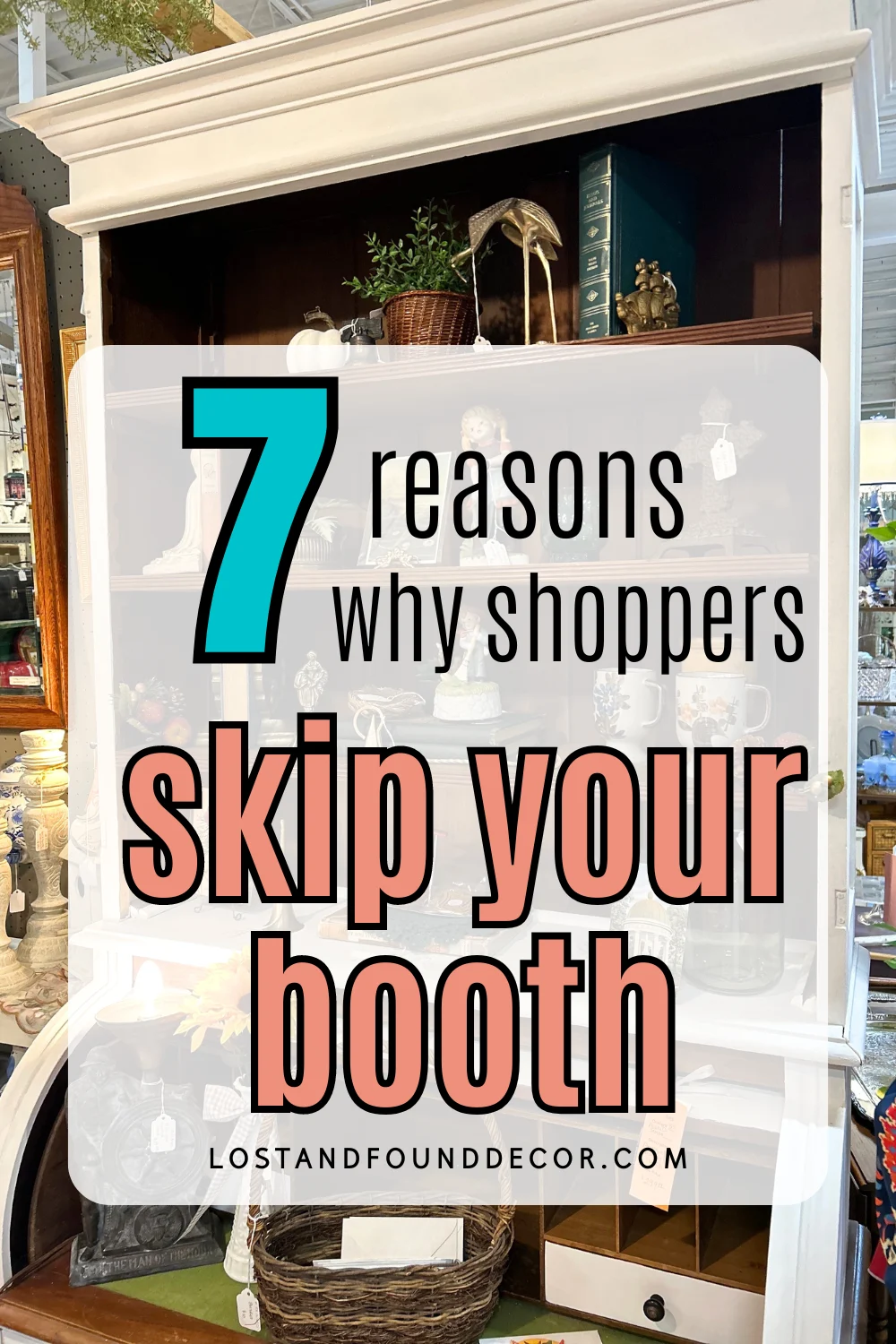
Common Mistakes at Antique Booths
1. Your booth space is closed.
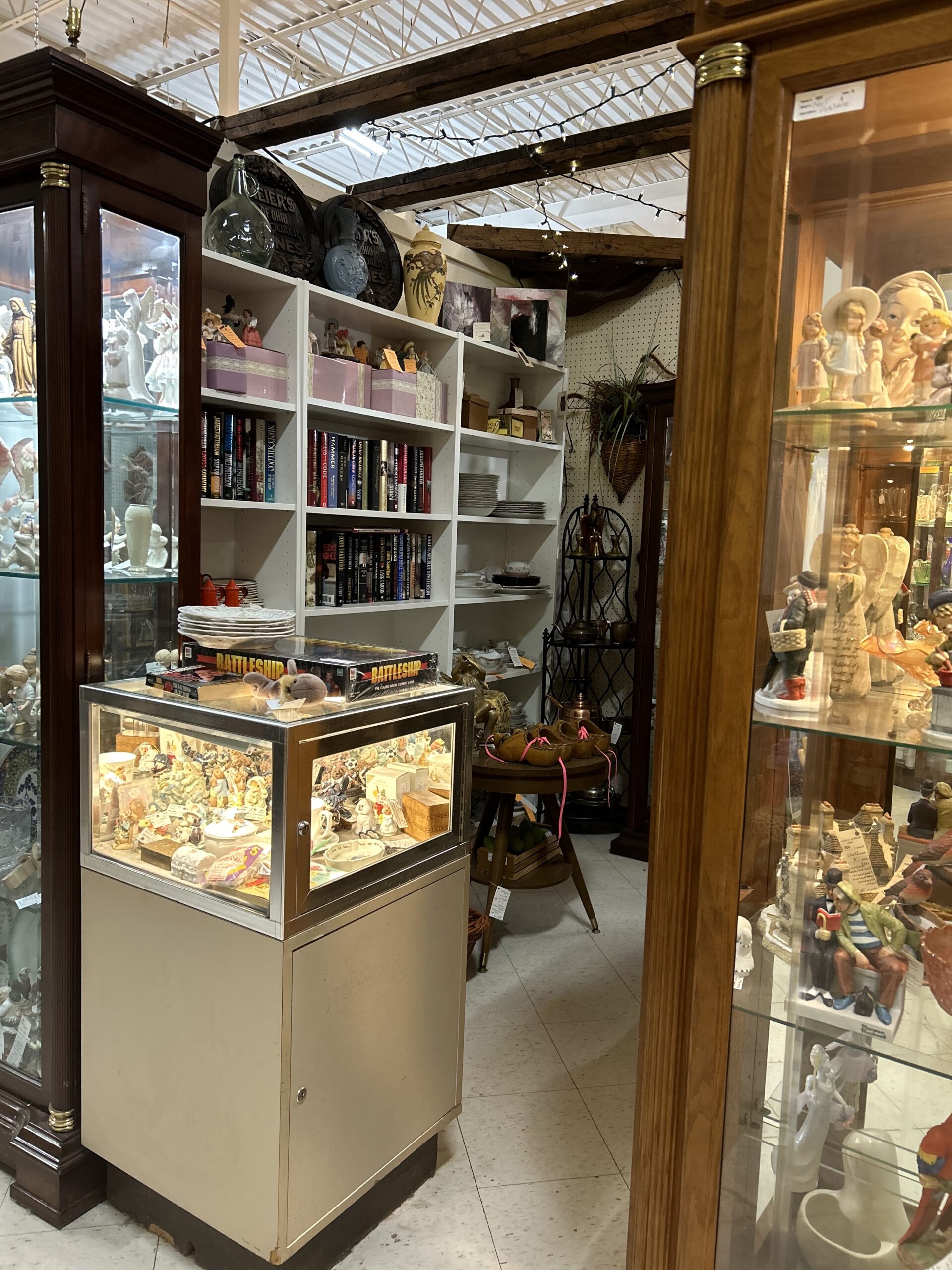
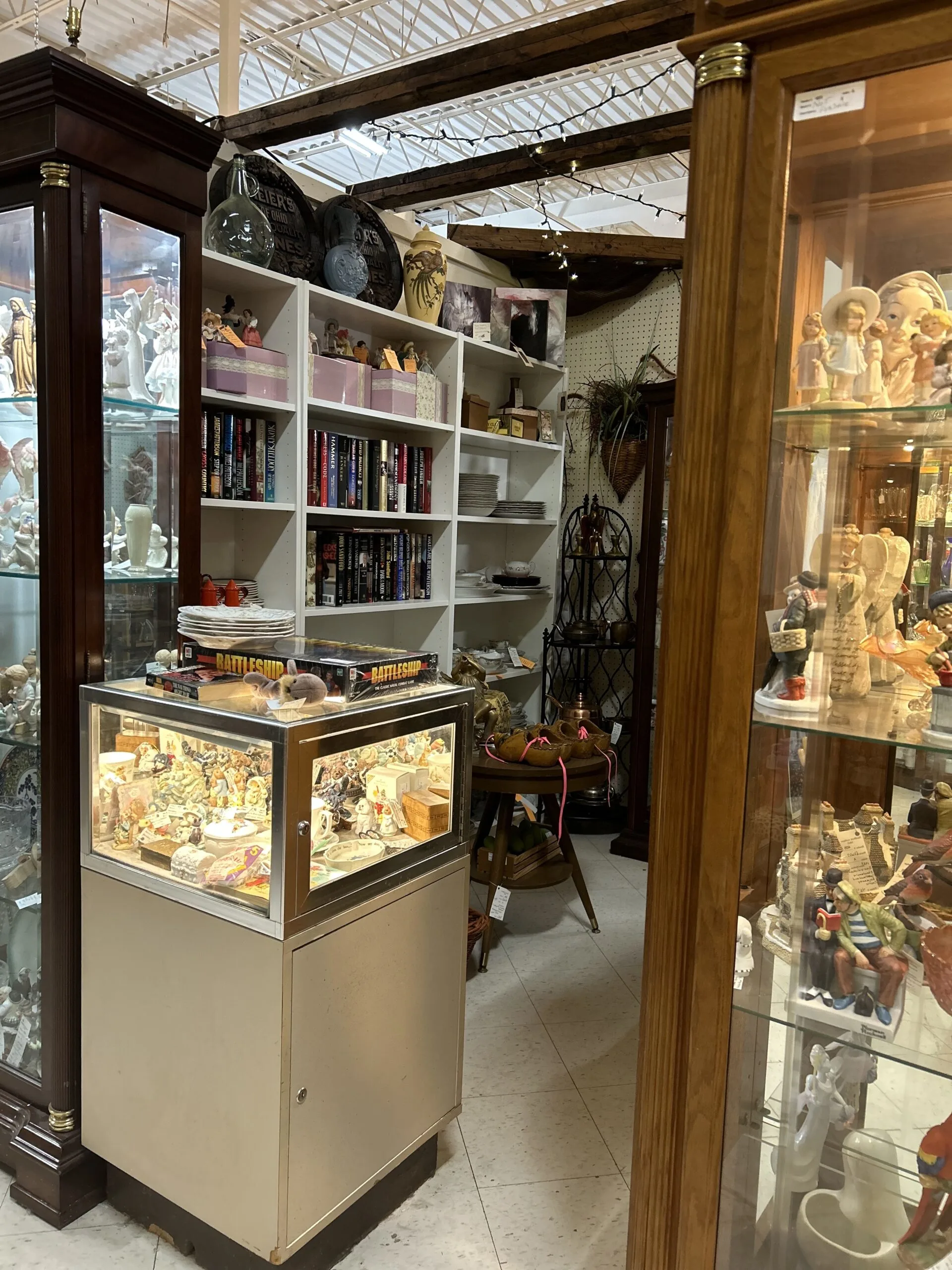
I’ve heard some vendors say that they think the best way to attract customers is to block off the opening of their booth space, so that shoppers have to go in to see what’s available in full.
This sounds logical in theory, but in reality I see it as a huge annoyance for customers.
Only the most avid collectors or pickers would venture into a closed booth. Casual shoppers tend to walk right past it because it’s not an attractive place.
So why try to alienate one group just to try to attract another?
How to fix it >>>
Make sure the entrance to your booth space is clear and open.
If you want to maximize your space while keeping items at the entrance, it should be small enough so as not to block the view.
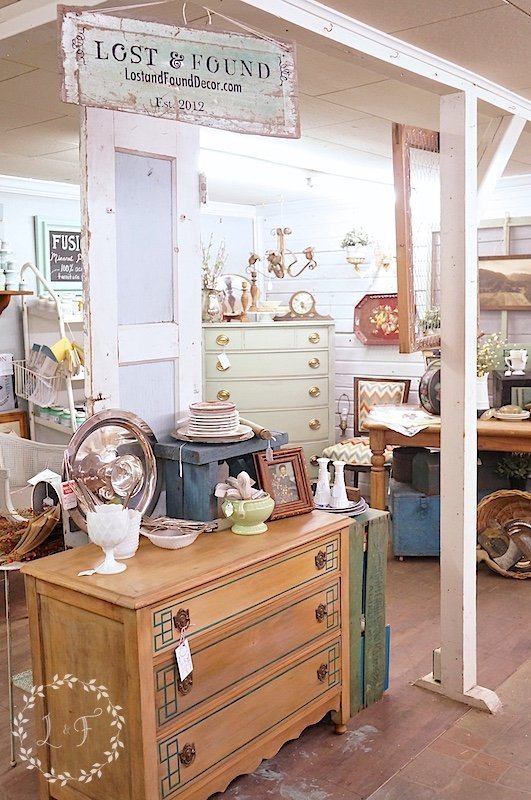
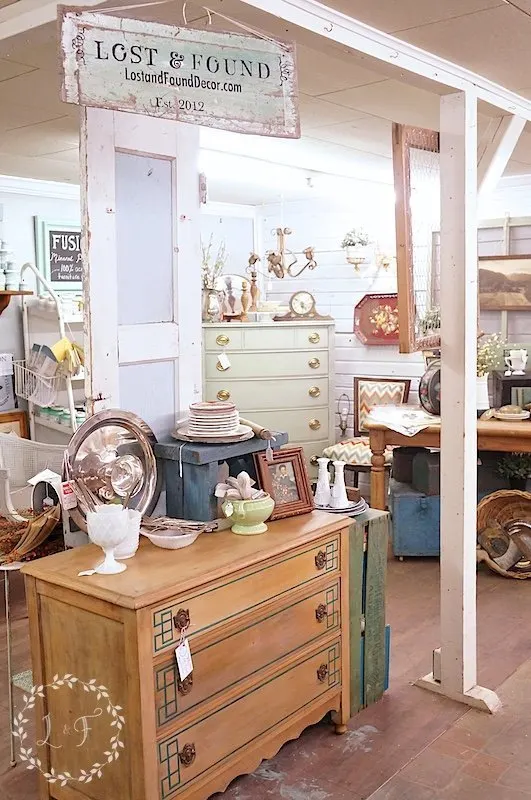
2. There is not enough open floor space to walk easily.

 No one wants to feel like they’re about to trip over your inventory. Any customer with mobility issues will avoid entering a kiosk that doesn’t allow for wide-open spaces.
No one wants to feel like they’re about to trip over your inventory. Any customer with mobility issues will avoid entering a kiosk that doesn’t allow for wide-open spaces.
Sellers often place items on the floor to increase their potential sales per square foot. But instead of increasing sales, this only turns customers away.
How to fix it >>>
Adjust the amount of inventory in your booth space to allow for a clear walking path, preferably large enough for a wheelchair to navigate.
This means you may have to take some home! Keep them as inventory to replenish once more items sell.
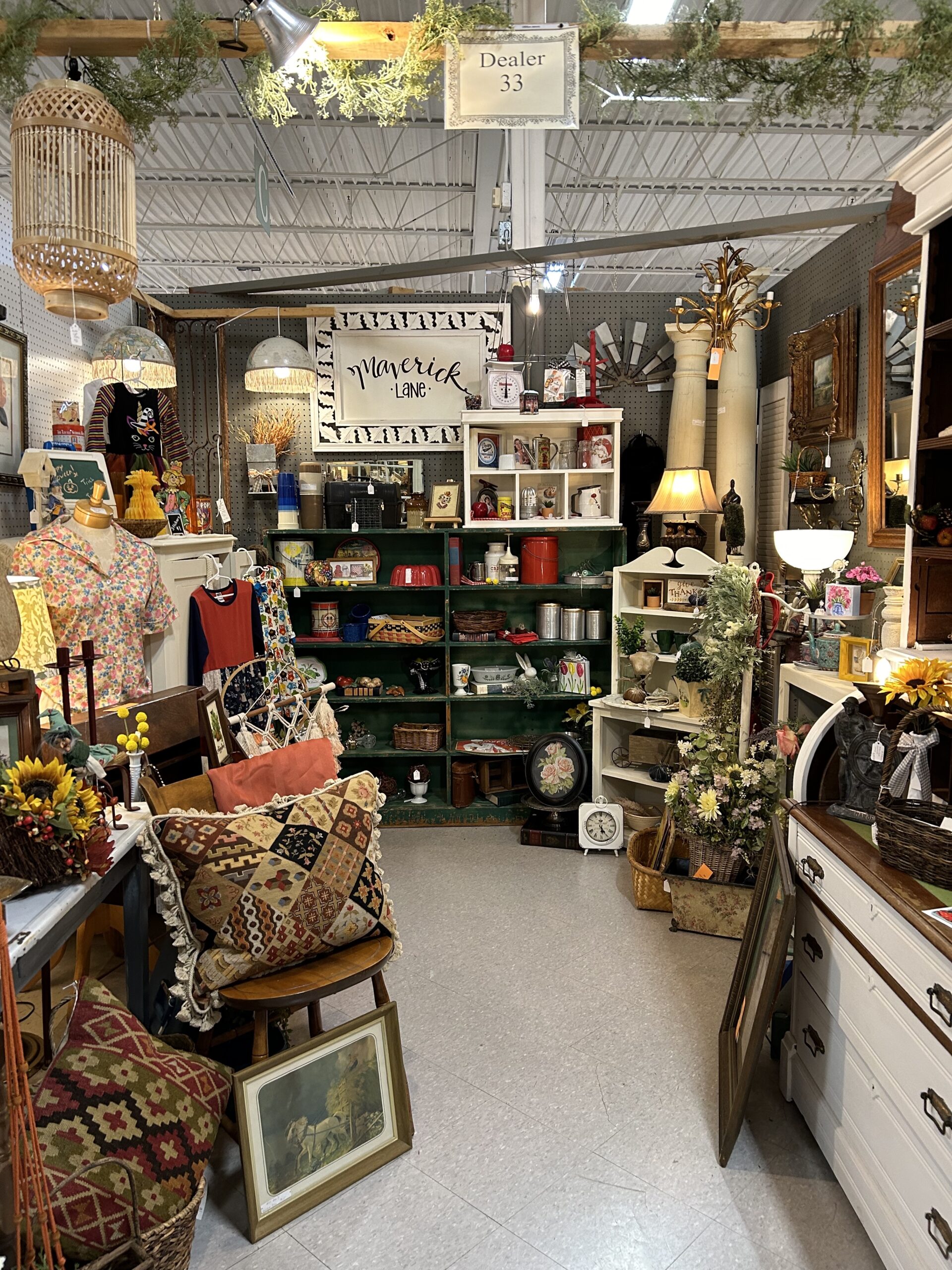
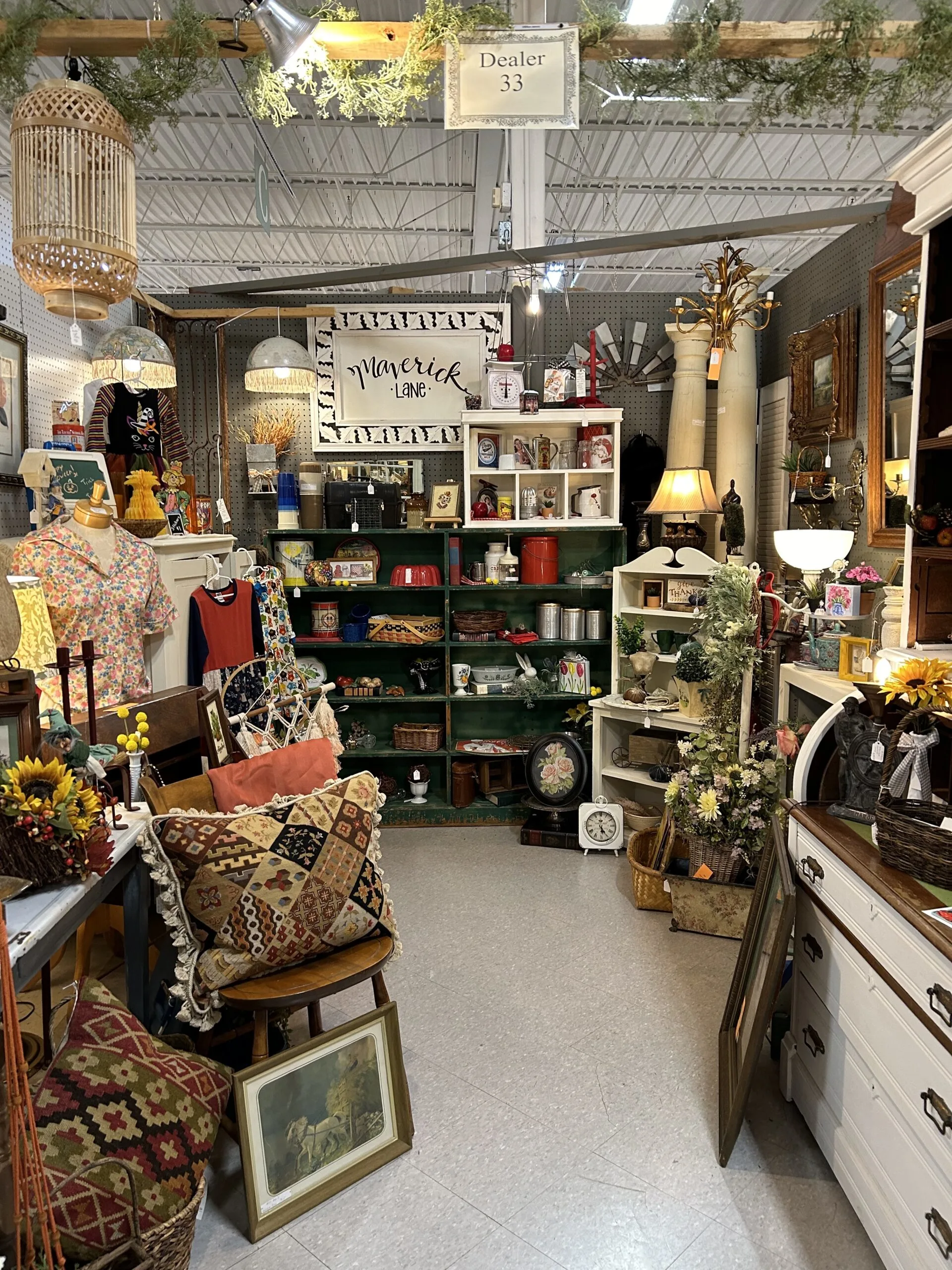
3. Random inventory with no clear subject or theme.
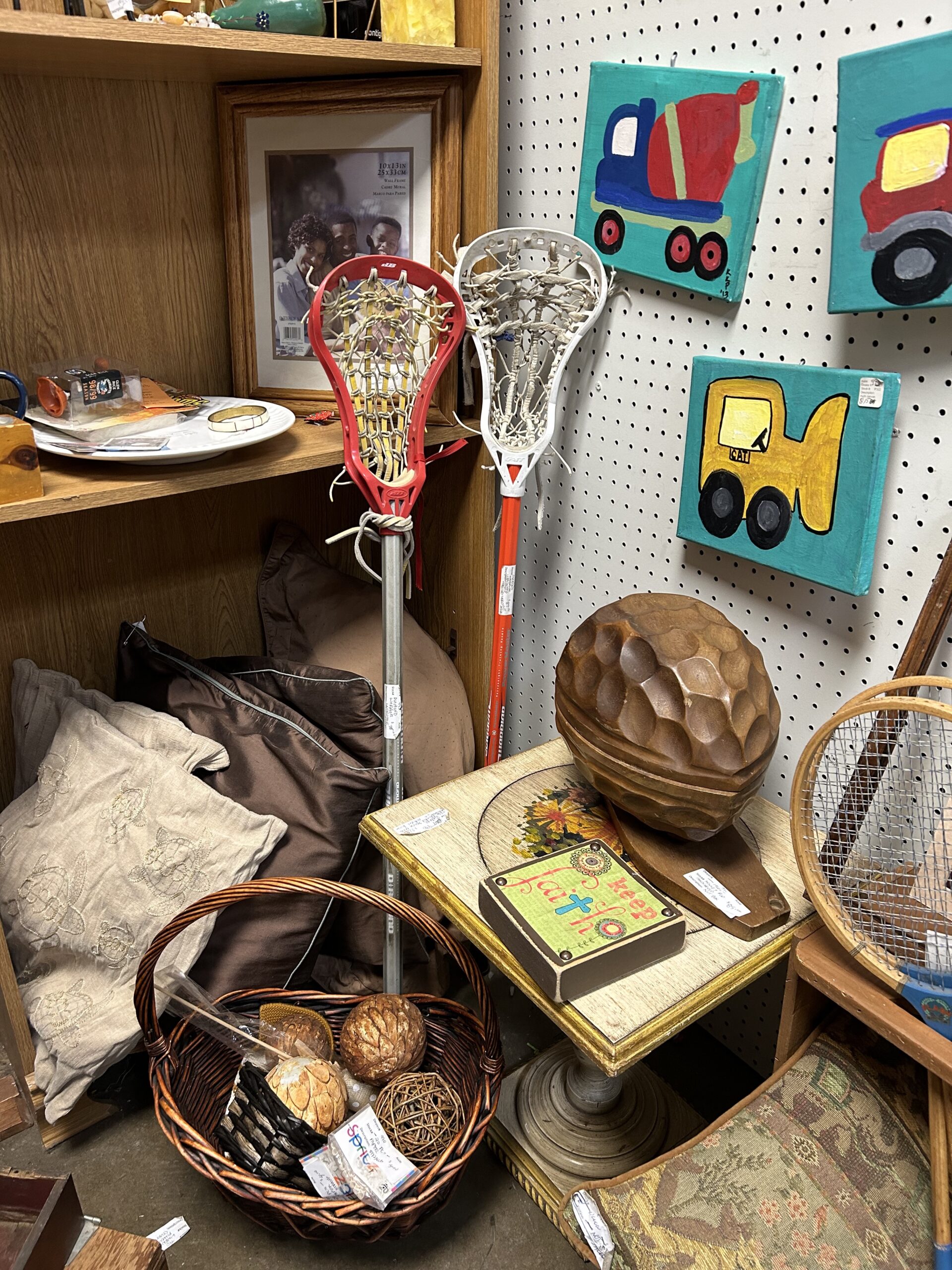
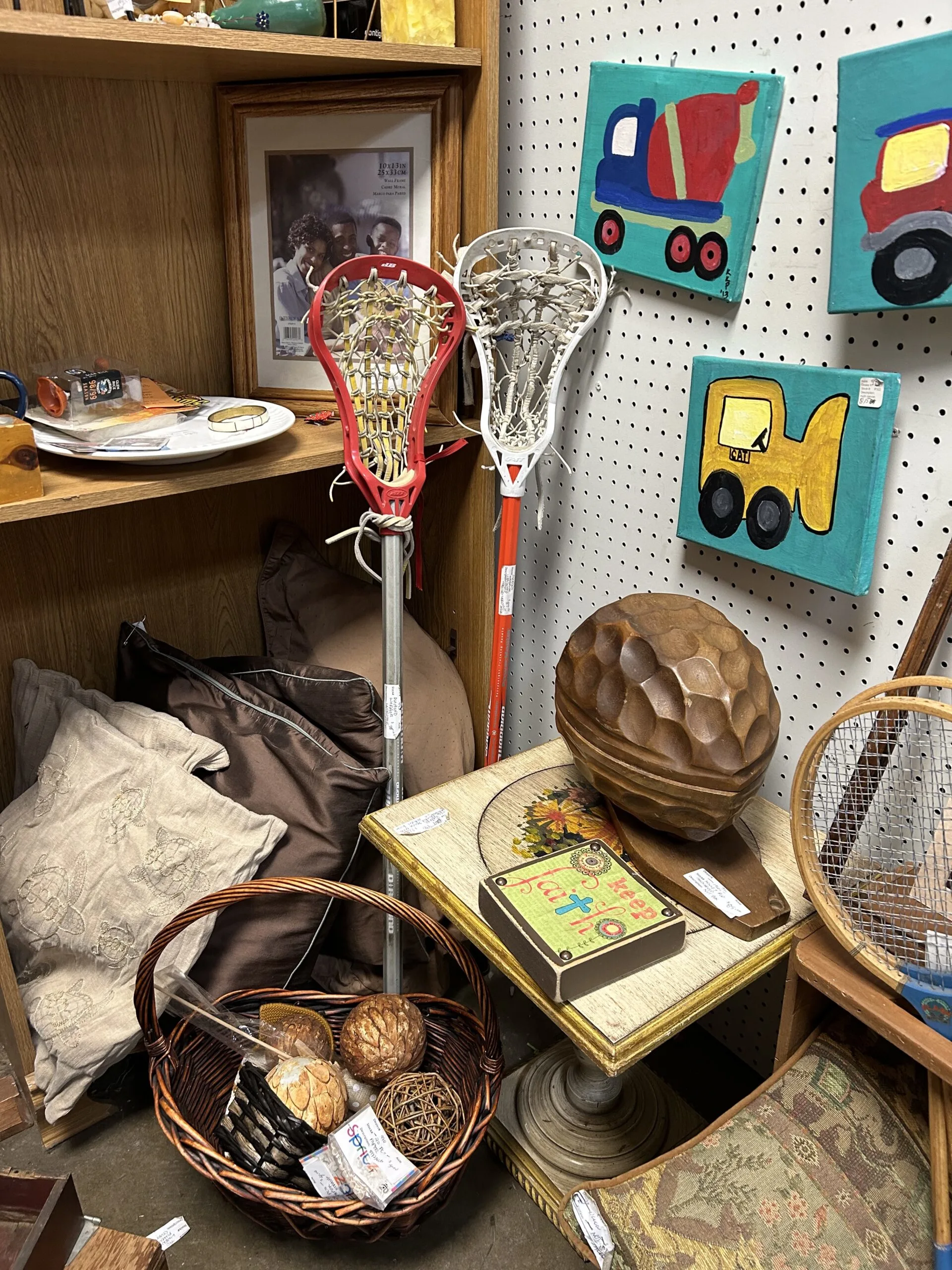 If you sell everything at your booth, customers won’t remember you for free.
If you sell everything at your booth, customers won’t remember you for free.
I understand that there may be a temptation to throw anything you think will make you money into the booth space. But this strategy only backfires, as customers lose interest because there is no clear design theme to attract them.
How to fix it >>>
Define a “brand” for your wing and stick to it.
Are you going to sell home decor? Great! Maybe old toys? Perfect. Or maybe your booth will be all about color – everything neutral or you have all bright and bold items.
The important point here is to give the elements in your cabin a cohesive identity.
Even if you want to sell a variety of items, don’t just randomly distribute them in your booth. Put all the jewelry together, all the sports equipment together, all the clothes together, etc.
Related Post: Ideas on What to Sell Each Month at Your Antiques Booth
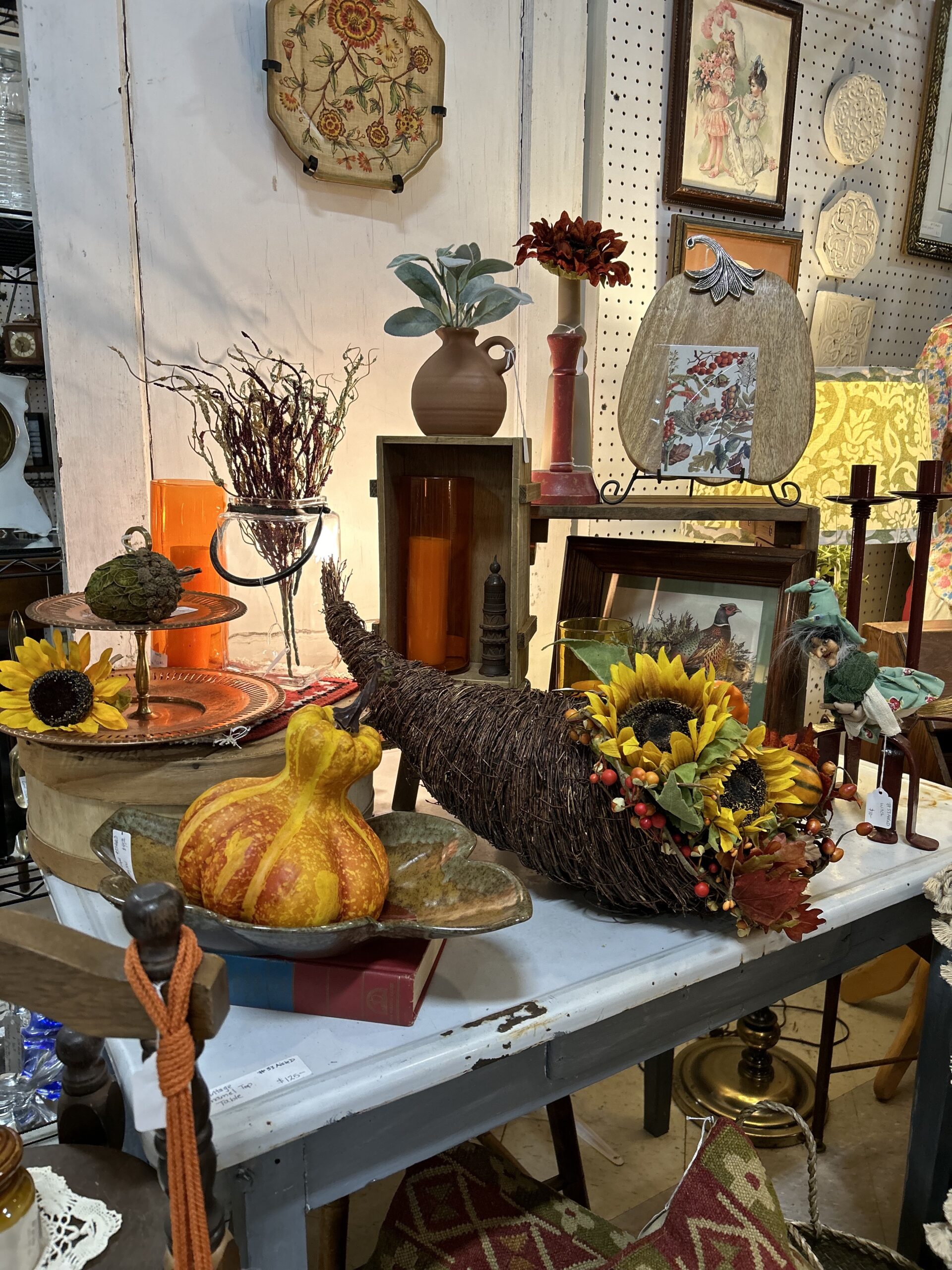
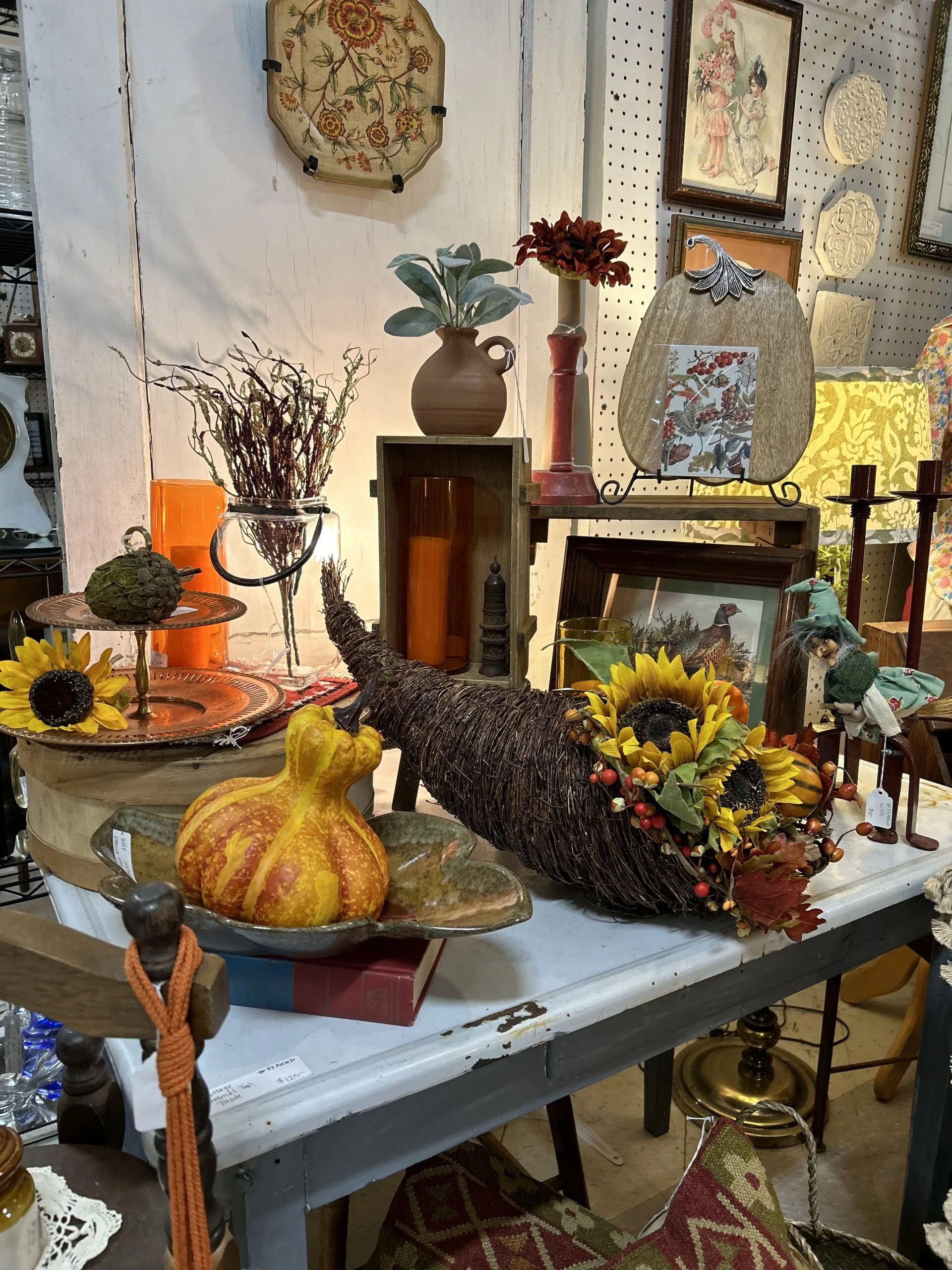
4. Disorganized inventory

 Very few shoppers have the motivation to sift through a pile of stuff to find what they want.
Very few shoppers have the motivation to sift through a pile of stuff to find what they want.
These frames may be great and sell well, but in a plastic bin like this they are likely to stay put. It would be better to take half of them and display them properly on a shelf and use the rest to restock when they sell.
How to fix it >>>
Determine the stacks of merchandise on display at your flea market booth. If you have a large quantity of a particular type of merchandise to display, make sure that the digging process for customers is simple and easy.
Look for creative options for how to organize your item collections so customers can easily see everything that’s available.
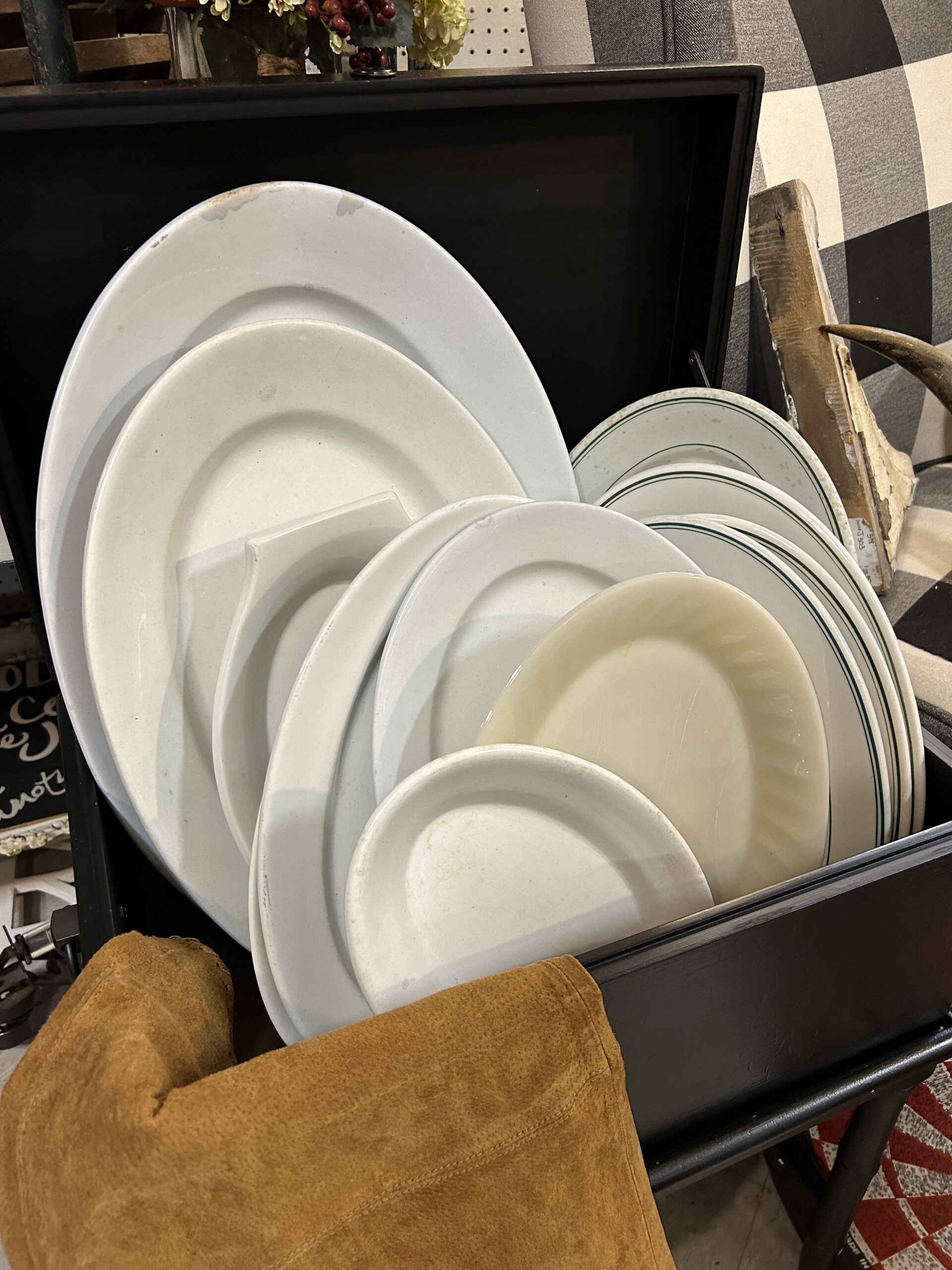
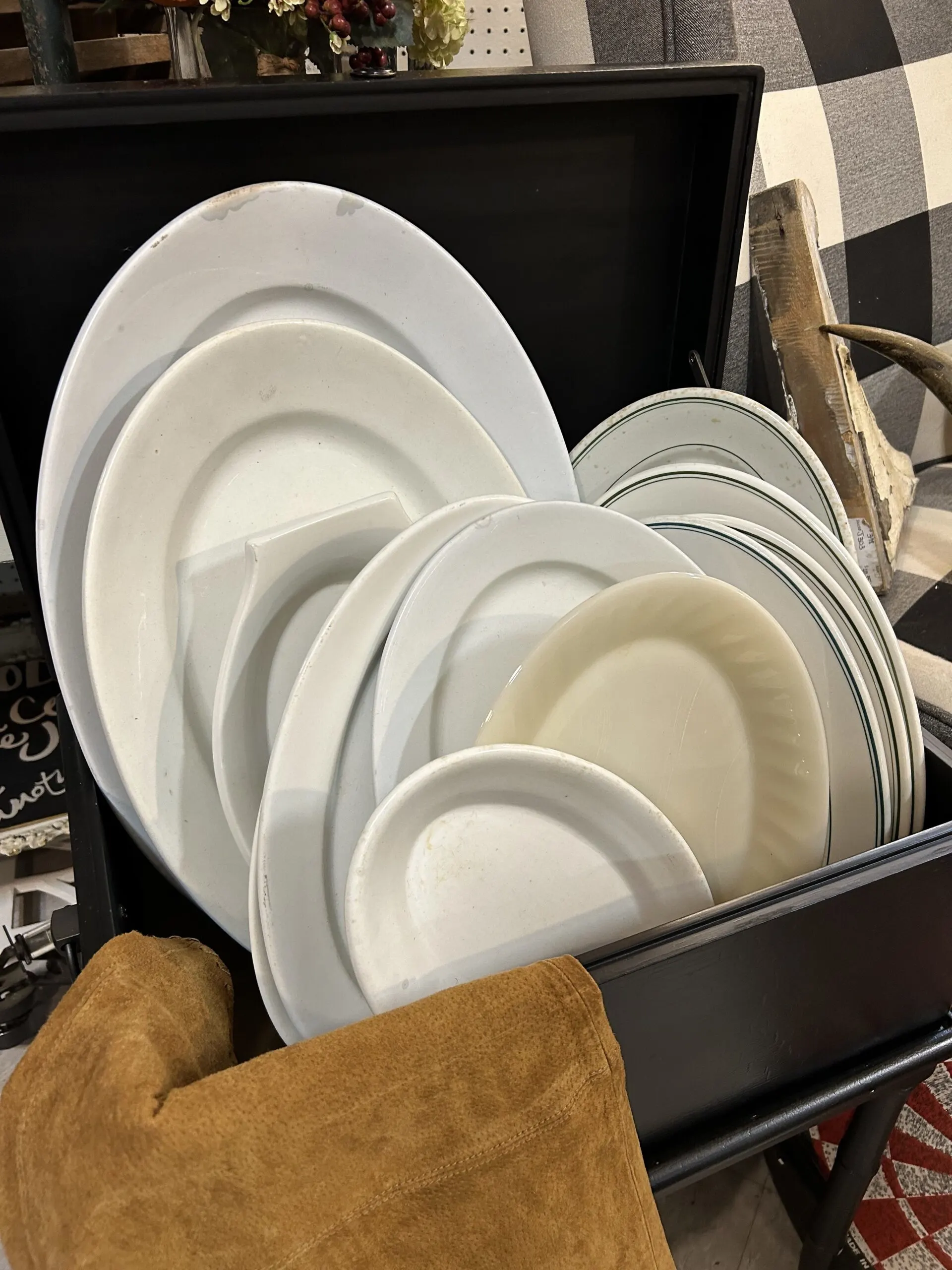
Related Post: 5 Reasons Why Your Kiosk or Vendor Business Isn’t Making a Profit
5. Empty shelves and empty walls
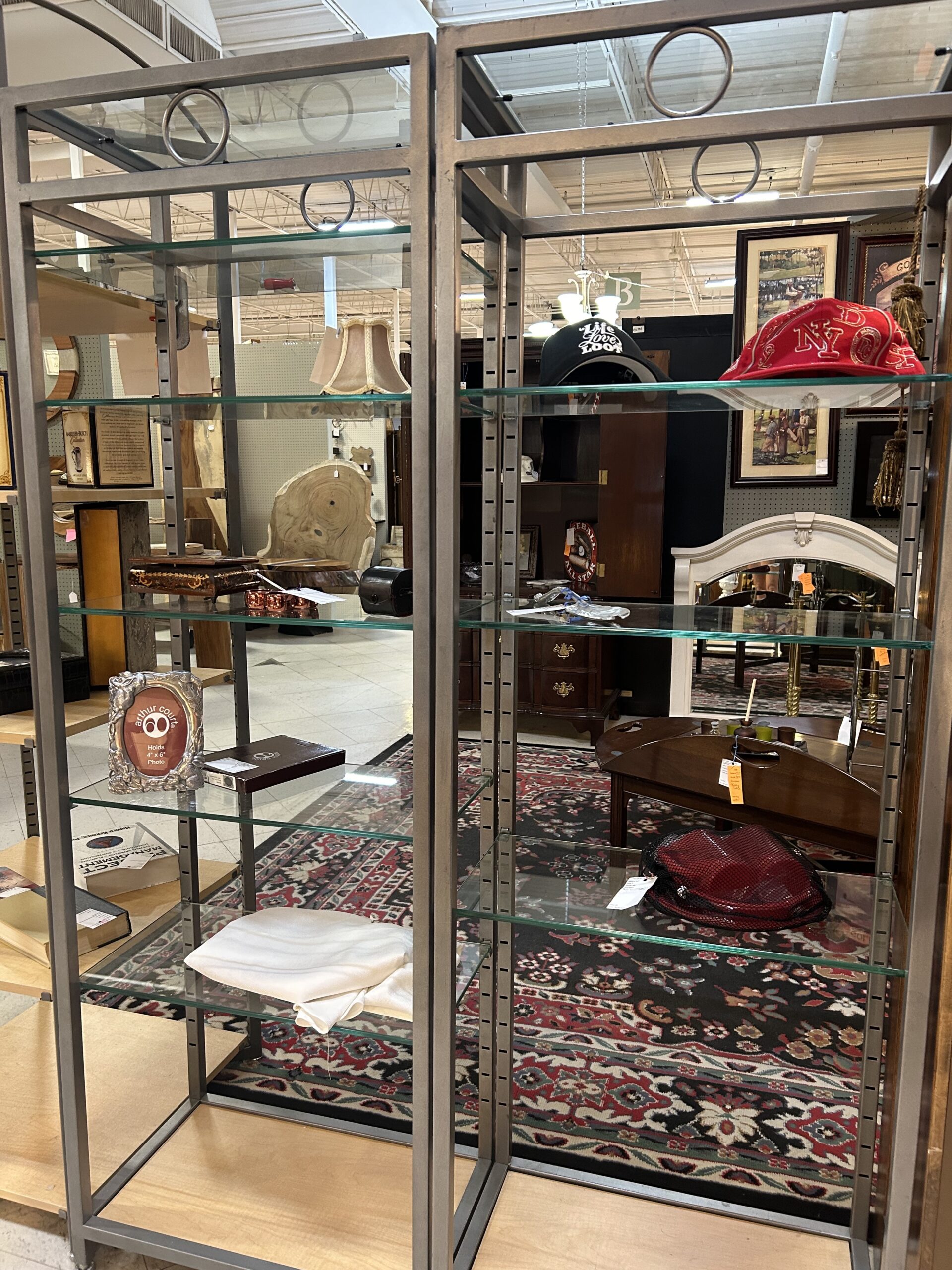
 Sometimes a lack of inventory can be the problem. If you have shelves in your space, they should be adequately stocked with items.
Sometimes a lack of inventory can be the problem. If you have shelves in your space, they should be adequately stocked with items.
Stalls with only a few large pieces and lots of empty wall space are quickly overrun by shoppers who can see everything offered at a glance.
How to fix it >>>
Create curated displays of similar items on your shelves. Be sure to add items of varying heights and hang artwork or other decorative accessories to fill empty walls.
If you’re a vendor who focuses primarily on furniture, adding a few other decorative elements will broaden the appeal of your booth and help give customers a reason to stop and look closer.
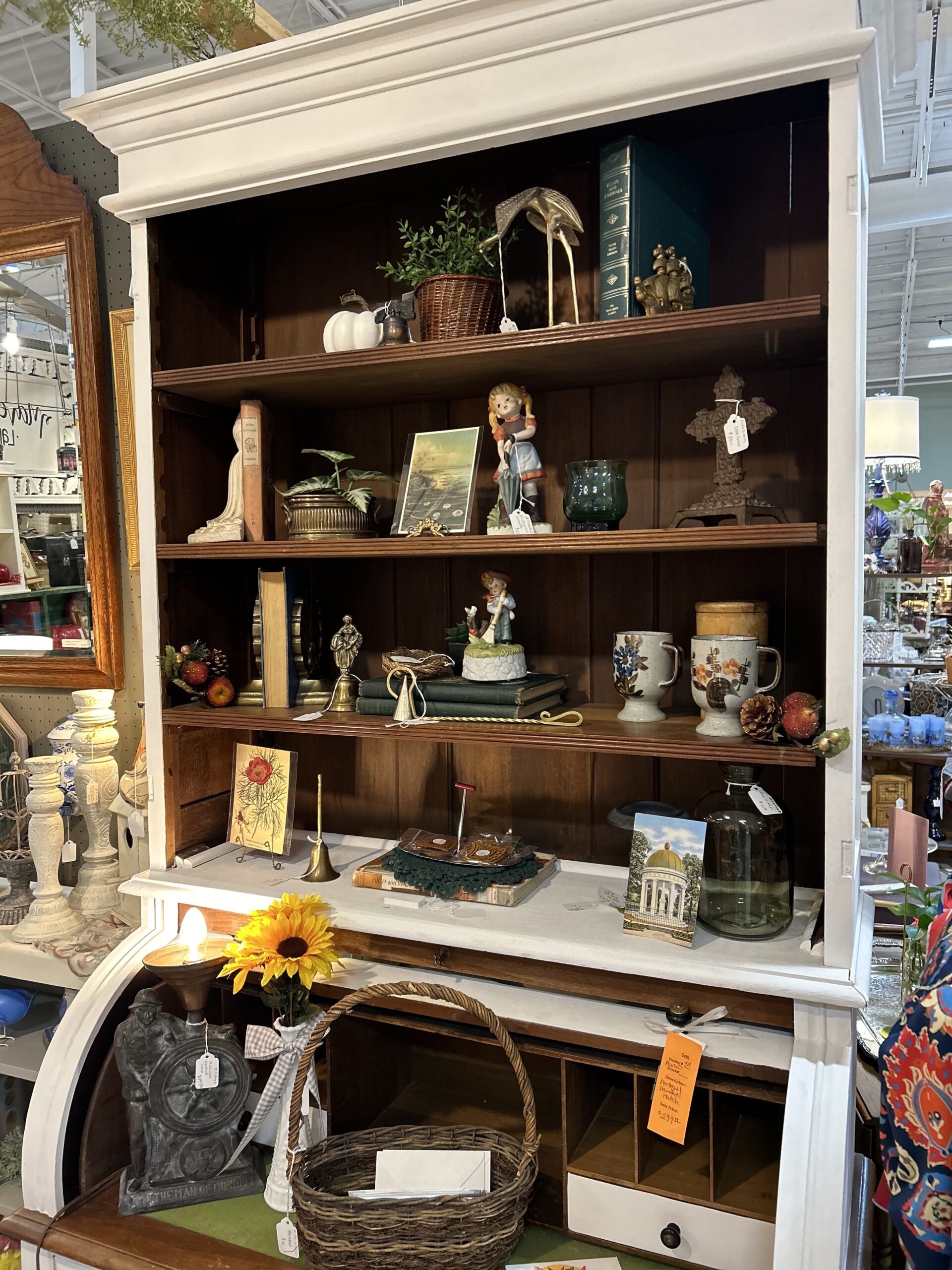
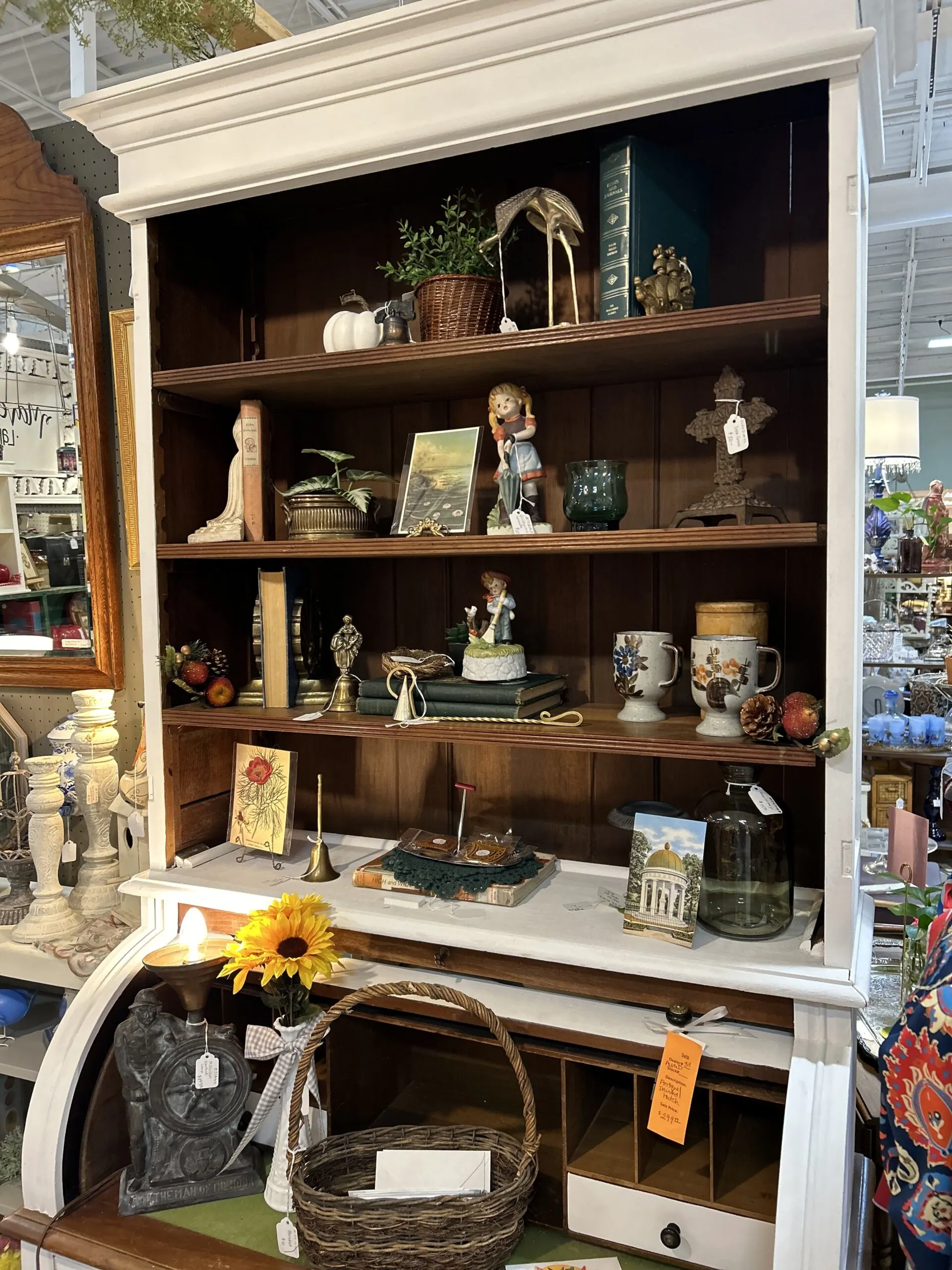
6. Kiosks that are a sensory overload

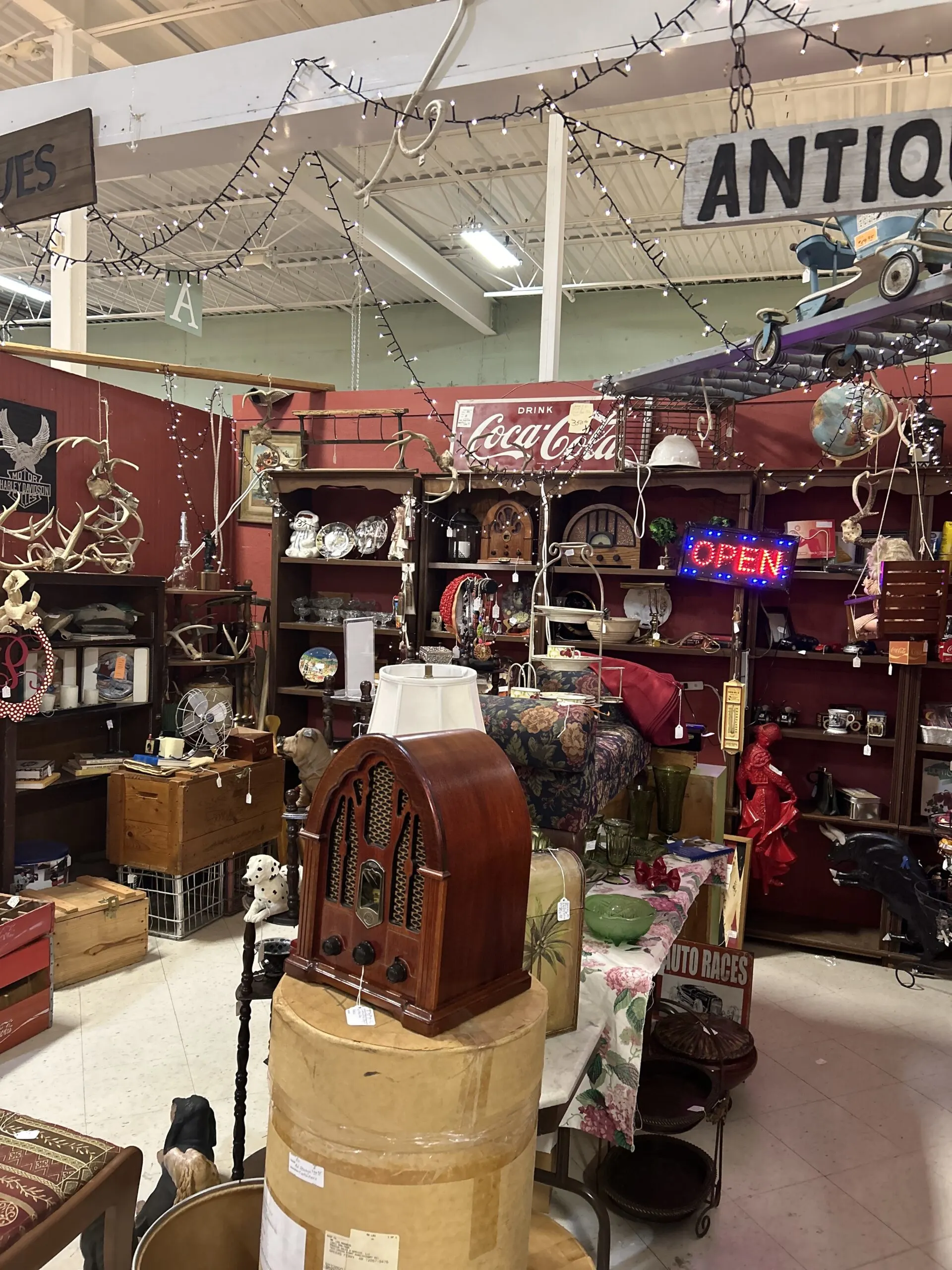 Adding lights to your booth can be a great way to create a cozy atmosphere, but it should be done in a way that doesn’t turn off more sensitive customers.
Adding lights to your booth can be a great way to create a cozy atmosphere, but it should be done in a way that doesn’t turn off more sensitive customers.
The string lights added to this booth were set to a flashing pattern, which ended up being quite annoying, along with the bright LED “open” sign.
Another example of this is kiosks that sell scented goods (candles, sachets, diffusers, etc.). Some shoppers are very sensitive to lighting and scents and may skip your kiosk entirely if they are overwhelmed by either.
How to fix >>>
Add additional lighting in the form of dimmable light using real bulbs or overhead lighting. If you are using string lights, set them to a steady light and not flicker.
If you sell any type of scented product, check in with the front desk staff periodically to see if there have been any complaints or if customers have heard comments about your booth. If so, consider removing the scented items.
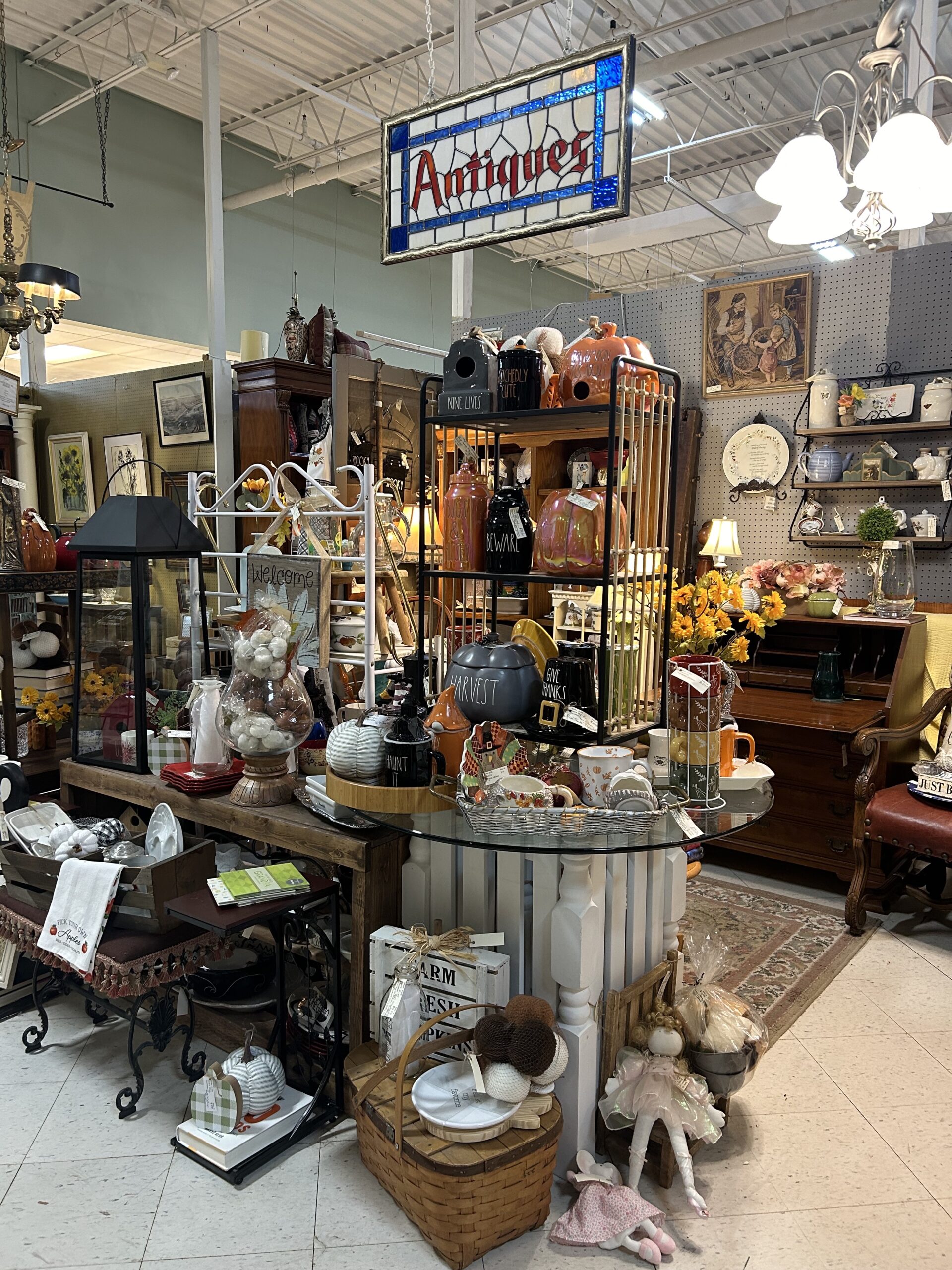
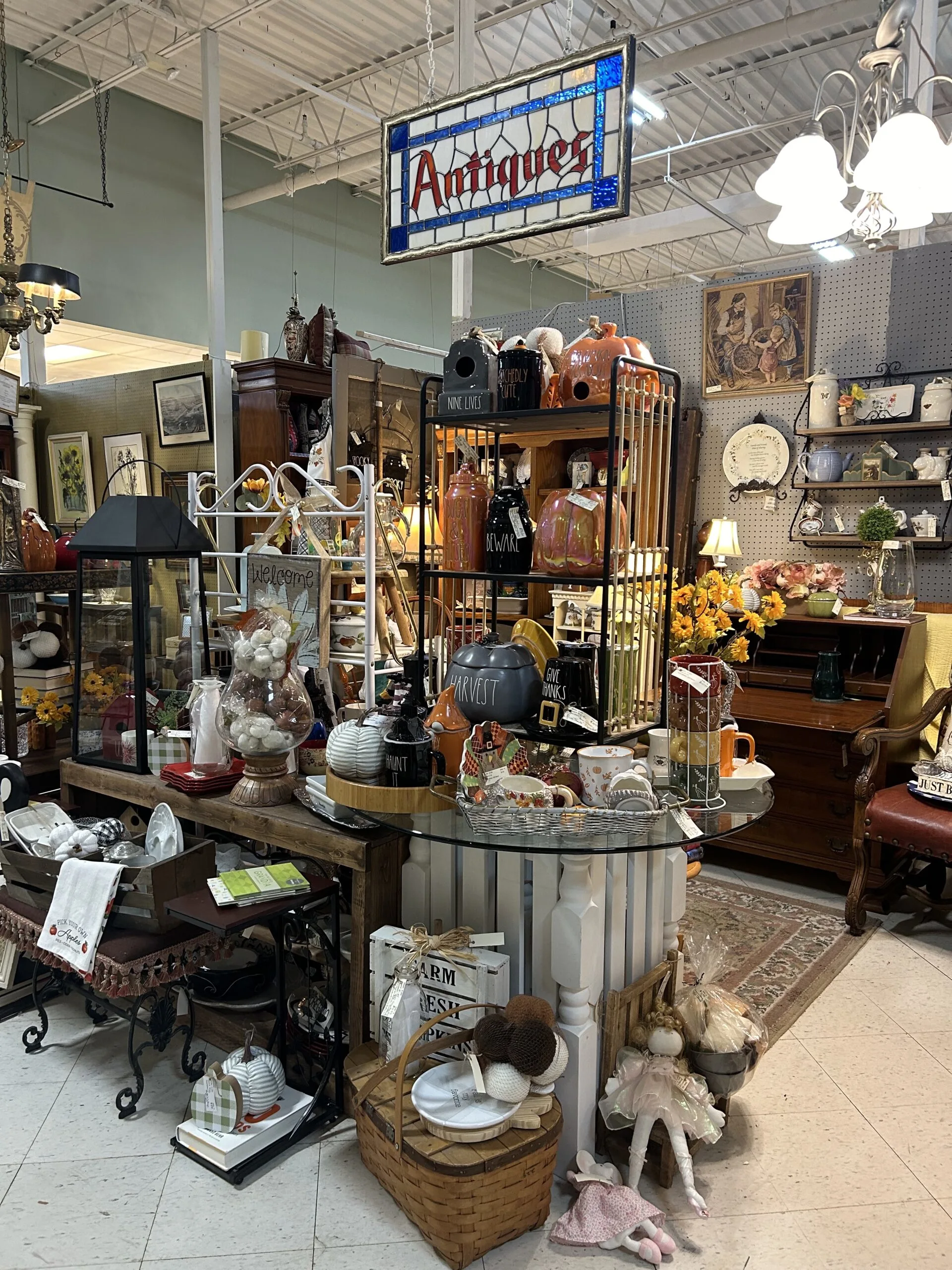
7. Mark your best items as “not for sale.”
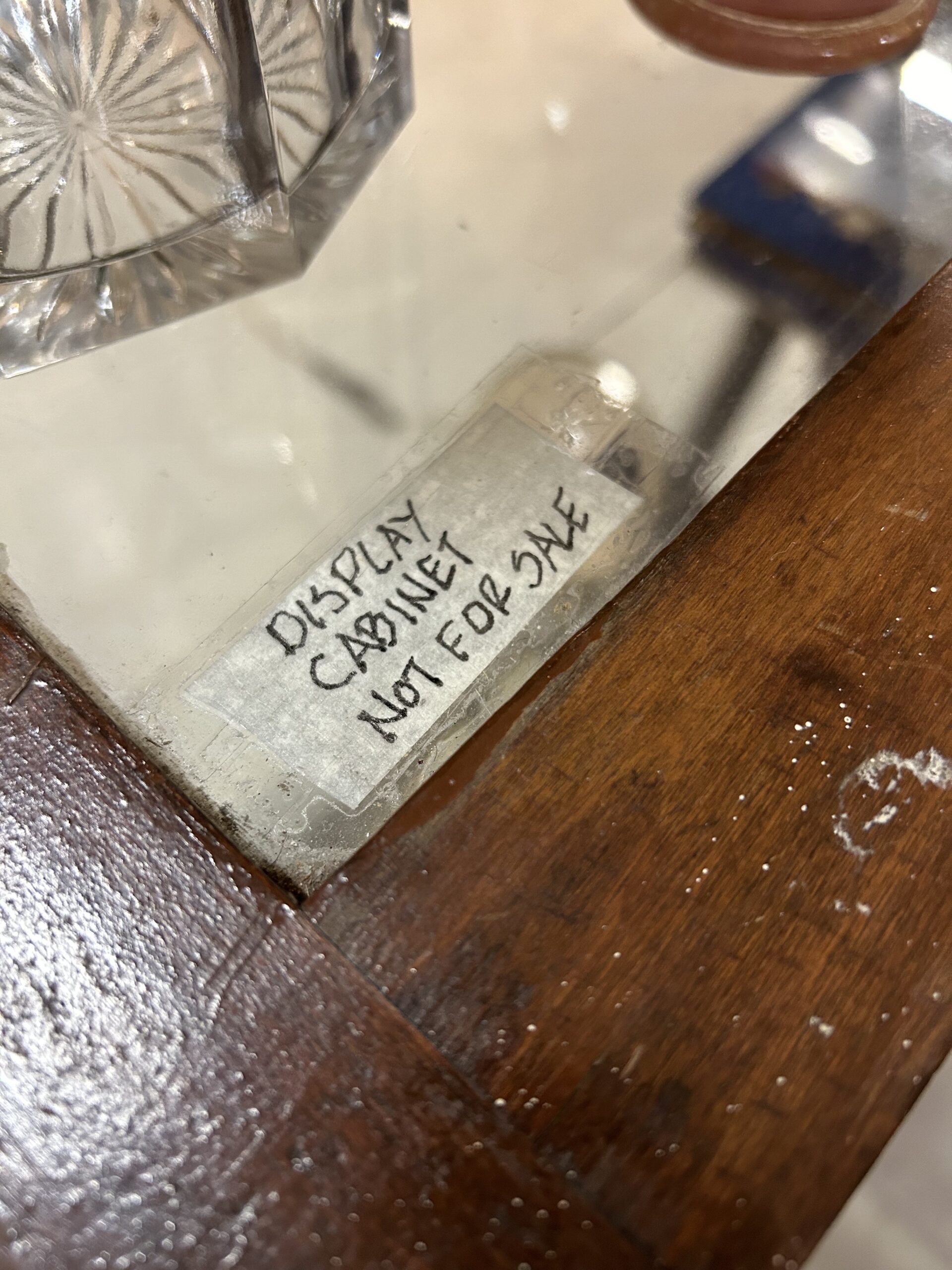
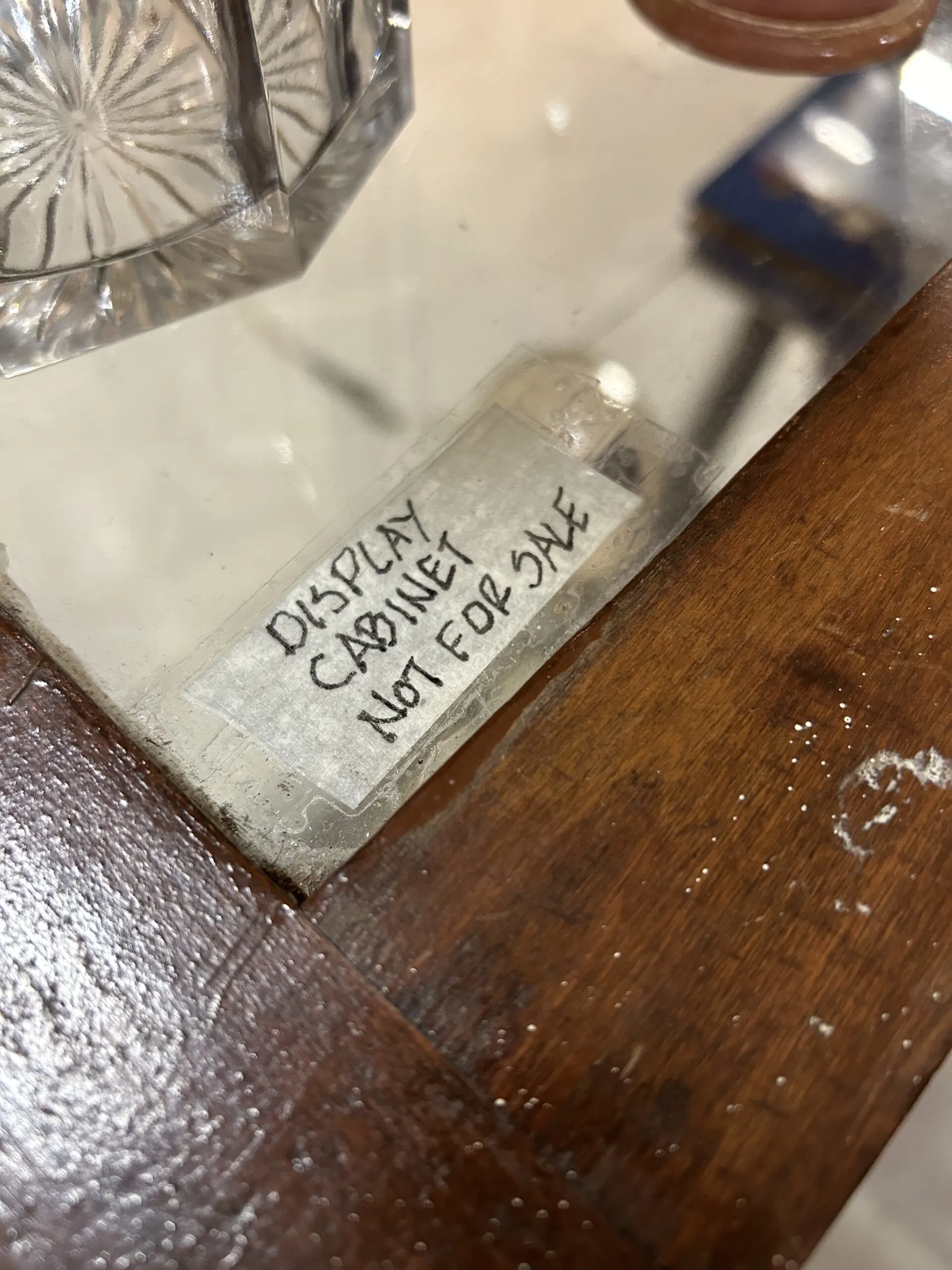 There’s nothing more frustrating for shoppers than not being able to buy the best items available in your space. Especially for smaller items that may just be part of the displays and small pieces, everything on your booth should be marked for sale.
There’s nothing more frustrating for shoppers than not being able to buy the best items available in your space. Especially for smaller items that may just be part of the displays and small pieces, everything on your booth should be marked for sale.
How to fix it >>>
As a seller myself, I can totally understand how hard it is to part with these amazing display pieces!
But maybe you should think about this – instead of slapping it with an “NFS” label, why not try putting a high price on it instead?
This way, the item has a tag and a price, so it’s not a hassle for customers. Then, if you do sell it, the big return eases the pain of losing the item. It’s worth considering!
Are you ready to turn your antique stall from a hobby into a business?

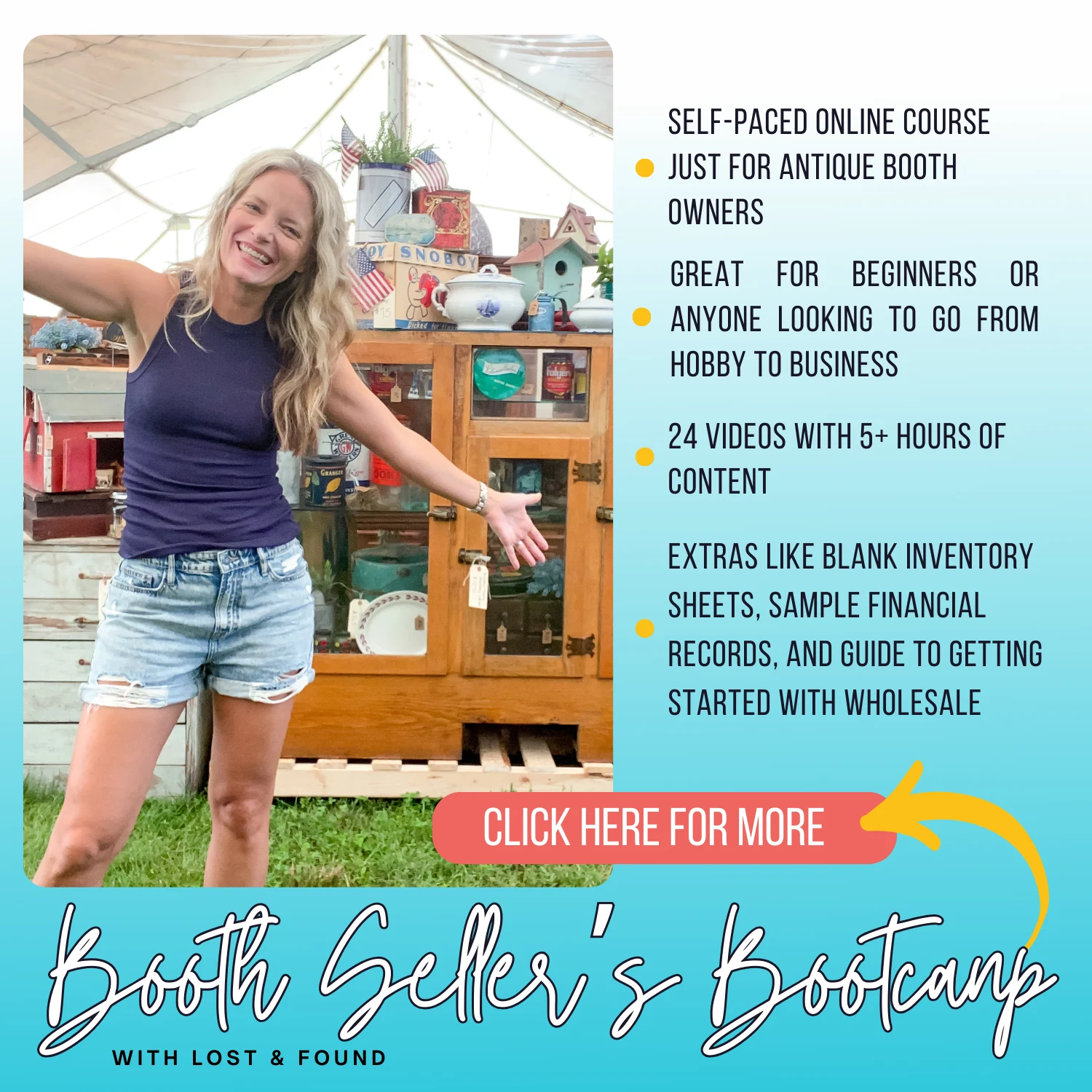
Final Thoughts on Common Antique Booth Mistakes
I see these same mistakes over and over again at antique malls and flea markets everywhere. If you’re a new seller, it can be difficult to learn the basics. Seeing these things in the booths around you might make you think this is how it’s done.
You may have been told by a seasoned salesperson to “make the most of your space” or “make it pop with lights,” and while your intentions were right, the execution needs some help.
Sometimes, we need to see our booths through the eyes of our customers. What we thought was attractive or enticing may not actually be so to the shoppers walking through the mall.
Running a vendor booth takes a lot of hard work! I want to see you enjoy great sales that make it worth your time! I believe that making a few simple adjustments to your booth space can go a long way in helping you get a bigger check at the end of the month.

